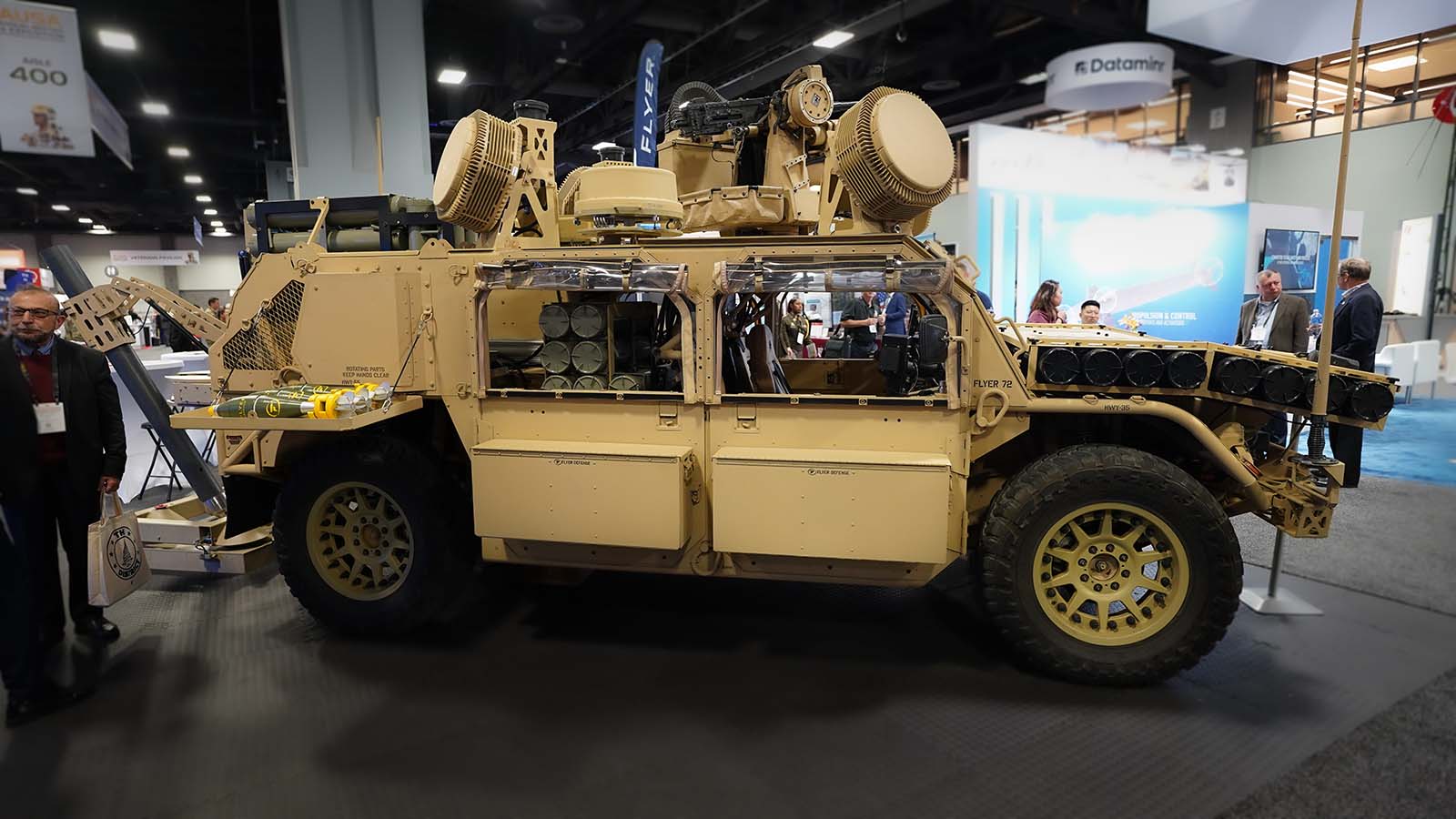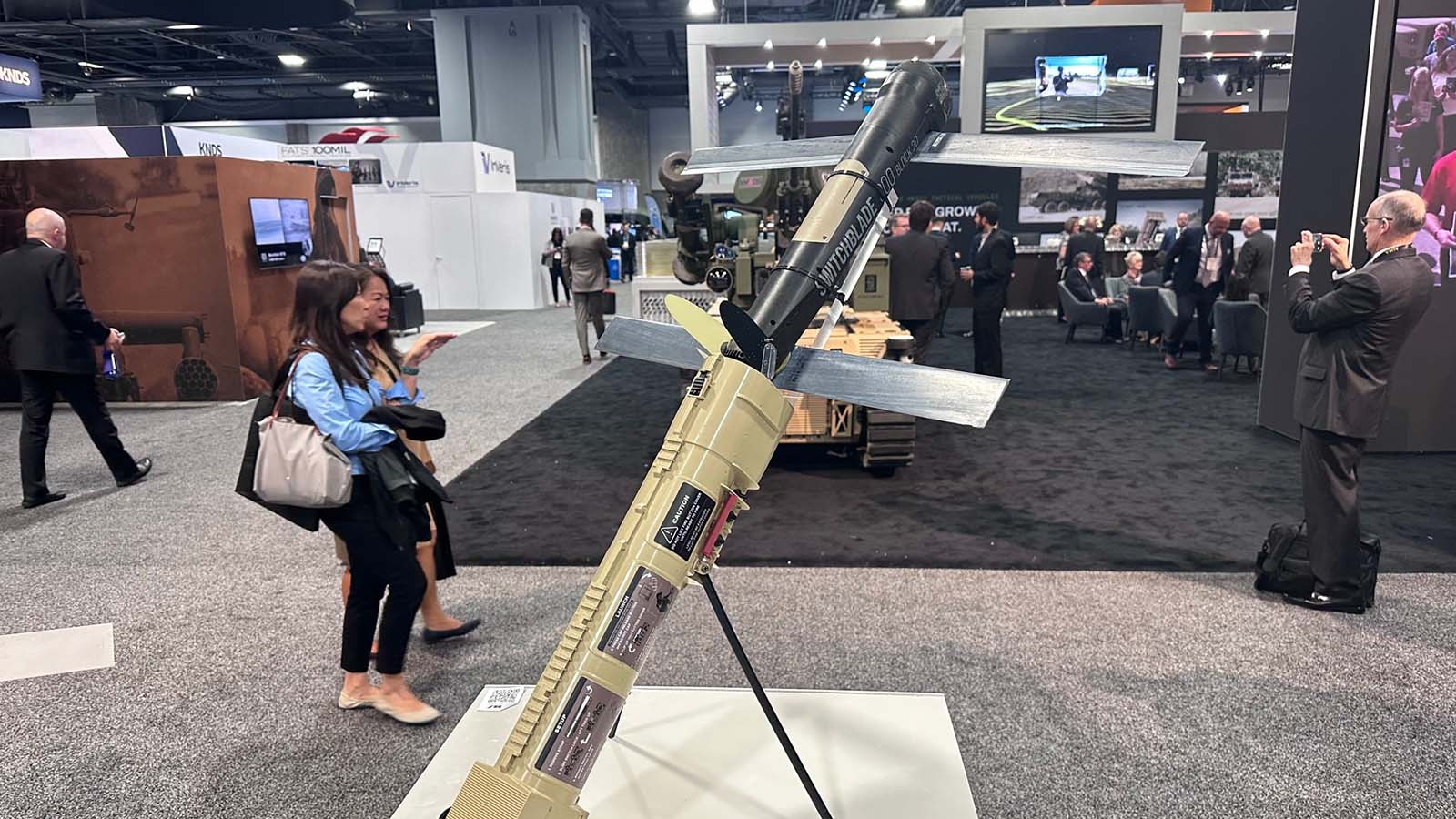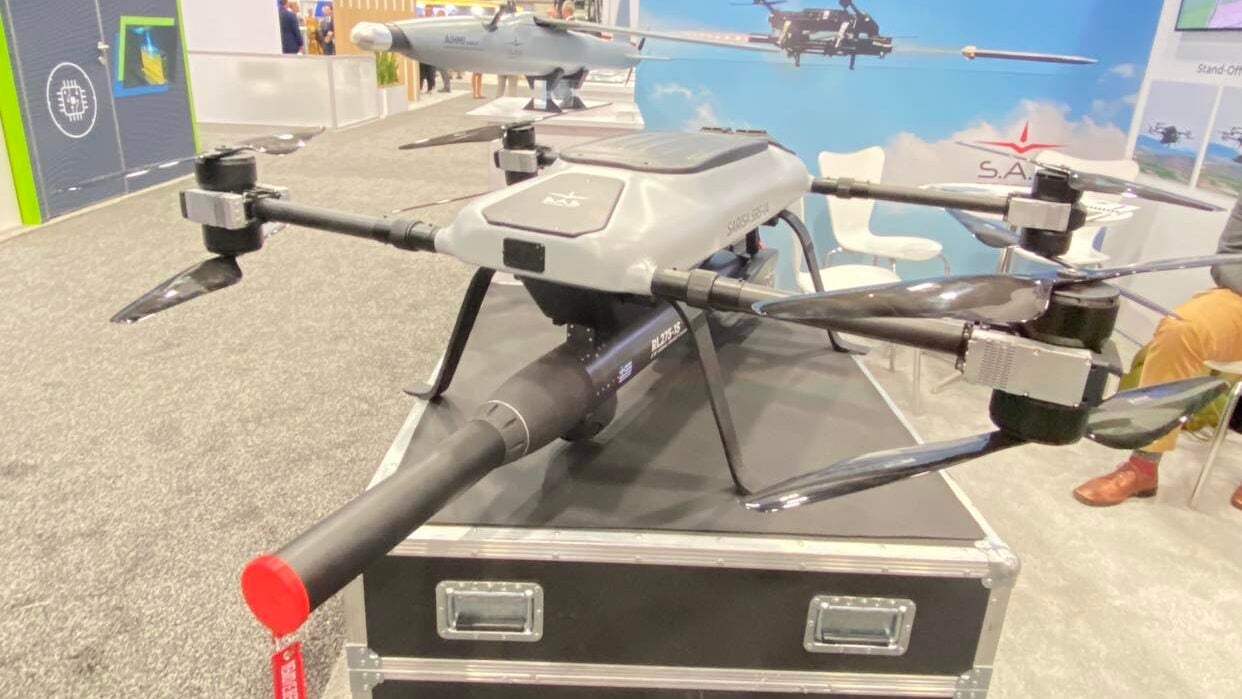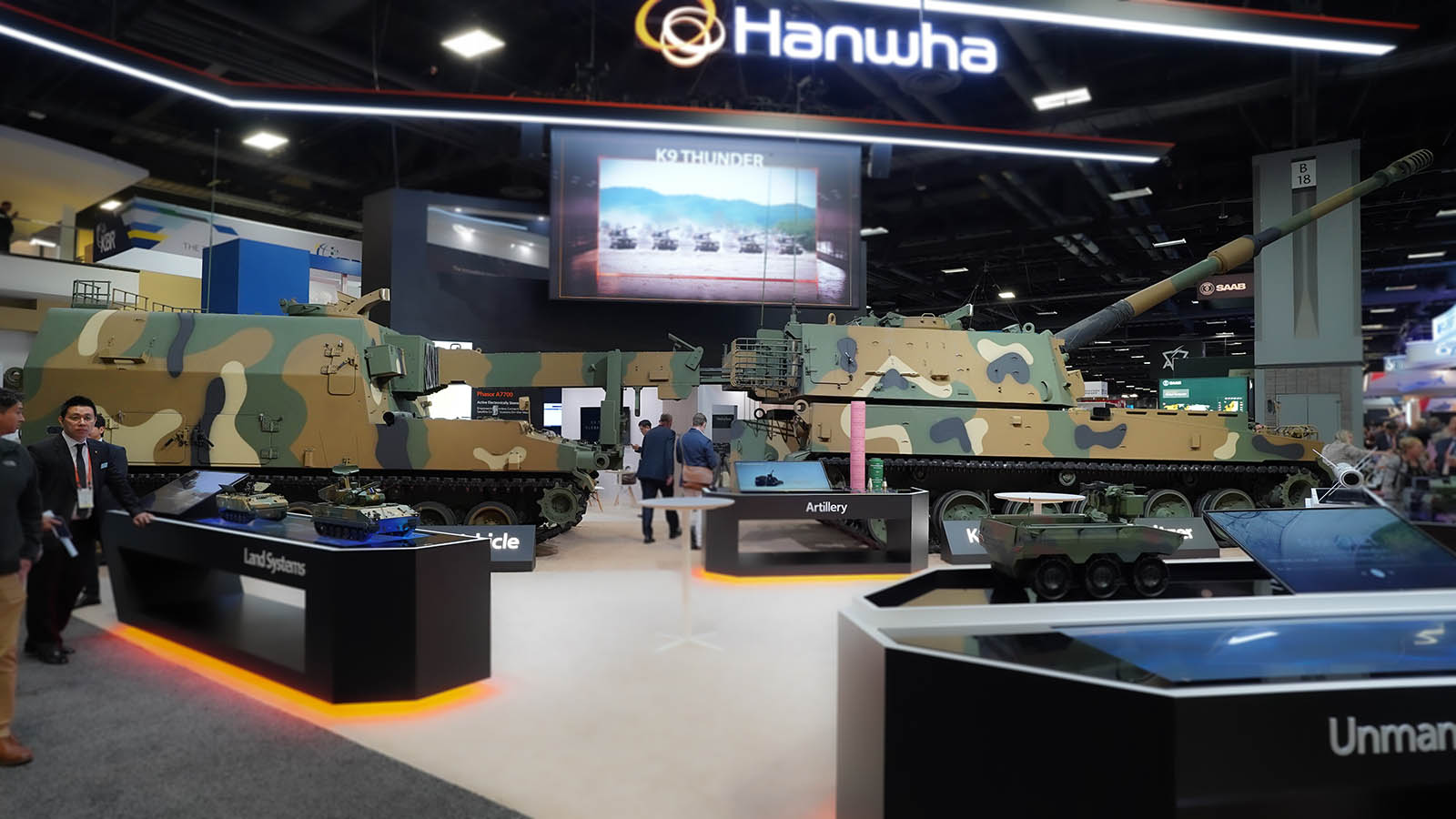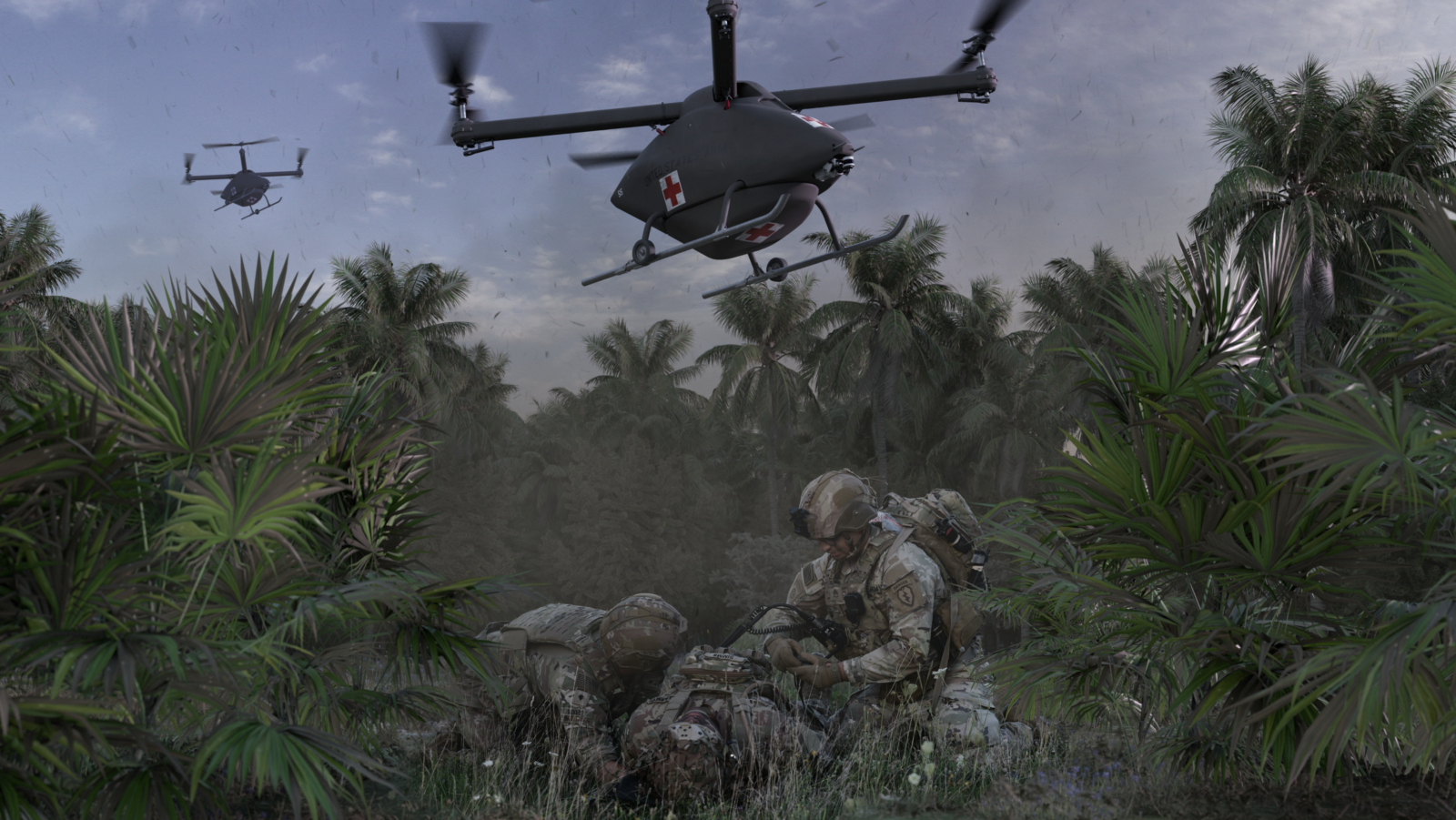
WASHINGTON — Amateurs talk killer robots, but professional talk logistics drones. As the Army and Marine Corps explore new ways to keep frontline forces stocked amidst rising threats to conventional supply lines, both services have independently decided to try out a new unmanned small helicopter called KARGO.
The Army announced its choice of KARGO just last week for a Heavy-Lift Vertical Take Off & Landing (HVTOL) drone capable of carrying supplies to troops in combat, the wounded to safety, or specialized sensor packages to perform reconnaissance, electronic warfare, and other roles. (The service reserved the right to pick a second company for the demonstration, but there’s not been any announcement of one so far). Meanwhile, the Marines had already picked KARGO last year as a candidate for the Medium variant of their Unmanned Logistics Systems — Air (MULS-A), along with a rival drone from Leidos.
KARGO is built by aerospace company Kaman and partner Near Earth Autonomy, which flew a half-sized version back in 2021 and now have two full-sized aircraft already ready to go, with one about to finish pre-flight checks, the company said.
Kaman has worked on unmanned helicopters since the 1950s. Their most famous product, a pair of experimental K-MAX drones, delivered over 2,250 tons of supplies in during the Afghan War, helping reduce convoys on IED-ridden roads, only to be abandoned by the military after the pilot project.
But while K-MAX was an airframe from a conventional manned helicopter converted for unmanned operations, with a payload of three tons, Kaman says KARGO is an all-new design built from the ground up as a mid-size drone, carrying a modest 800 pounds and compact enough to fit, with rotors folded, in a standard ISO shipping container.
KARGO is not just smaller and more nimble than its ancestor, it’s meant to be smarter as well, with far less reliance on a human operator in remote control. To do that, the two companies are handling different aspects of the software. Kaman, building on its experience with K-MAX, provides the basic automation to operate unmanned, while Near Earth adds more complex autonomy to adapt to changing circumstances.
“What we know how to do is automate …operating safely without a pilot on board,” said Kaman’s director of business development, Andrew Conant, in an interview with Breaking Defense. “Before you include Near Earth, what this thing could potentially do is take off on its own, fly a GPS route, land somewhere, and then come back. … Whatever you programmed into your mission computer, this machine will do.
“For what the Army needs and what the Marines need… this is not good enough,” continued Conant, an Army veteran himself. No mission ever goes entirely according to the preprogrammed plan. What if the drone is landing at its GPS-pinpointed destination and a young Marine drives a truck into its path? What if the enemy fires a mortar that gouges a hole in the landing zone? Or if the satellite-generated map says ground level at the LZ is just a few feet lower than it really is?

Responding to those unforeseen deviations between the digital map and physical territory requires a drone that can detect anomalies in the environment, update its internal model of the external world, and adapt its course accordingly.
“What Near Earth provides is the sensors and the processing power to determine if the landing is safe. And if it’s not, it also has the processing power to tell the machine where to go to land safely as closely to the intended point as possible,” Conant said. “I’ve seen them demonstrate this on KMAX [and] on a surrogate aircraft that is representative of KARGO.”
Near Earth CEO and co-founder Sanjiv Singh told Breaking Defense, “Autonomy brings some safety for all the kinds of cases you can’t foresee ahead of time,” from map errors to loss of GPS to engine breakdowns. It’s programming a computer, he said, “to basically guide the vehicle like a pilot would in dealing with all these unforeseen circumstances.
The software consists of separate module for seven crucial functions, from mission planning before takeoff, to avoiding other aircraft and obstacles in flight, to safe landing at the destination. And while Near Earth has been working closely with Kaman on KARGO, Singh said these modules can be adapted to all sorts of unmanned aircraft.
“We are able to bring these into almost any vehicle that’s modern,” he said, and even an aircraft with old-school hydraulic controls instead of electric ones could be adapted using actuators.
This division of labor between the specific automation to operate a given vehicle unmanned and the more general-purpose autonomy to cope with changing circumstances is a new potential model for military drones. The Army’s Robotic Combat Vehicle for ground warfare, for instance, is exploring separate contracts with vehicle developers and software specialists.
One benefit of this kind of split: Developers can segregate basic safety functions, which require rigorously deterministic, consistently predictable IF-THEN programming, and higher-order understanding of changing environments, which requires often-opaque machine learning algorithms.
“If you don’t have that separation between your autonomy stack and your safety functions, you will never get through independent test and evaluation,” Army Col. Jeffrey Jurand told the Nexus 23 conference earlier this year, “because…there’s no way to prove that [any] changes or upgrades to software you’ve done do not touch safety-critical vehicle management functions.”
“Non-deterministic systems are harder to certify,” said Near Earth’s Singh. “[But] generally, when we have a recognition task … to identify, Hey, that’s a person! That’s a vehicle! That’s a bird! Or, that’s another airplane! Those kinds of tasks … we use [machine] learning.”



